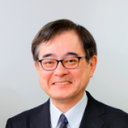Therapeutic effects of human multilineage-differentiating stress enduring (MUSE) cell transplantation into infarct brain of mice.
Kľúčové slová
Abstrakt
OBJECTIVE
Bone marrow stromal cells (BMSCs) are heterogeneous and their therapeutic effect is pleiotropic. Multilineage-differentiating stress enduring (Muse) cells are recently identified to comprise several percentages of BMSCs, being able to differentiate into triploblastic lineages including neuronal cells and act as tissue repair cells. This study was aimed to clarify how Muse and non-Muse cells in BMSCs contribute to functional recovery after ischemic stroke.
METHODS
Human BMSCs were separated into stage specific embryonic antigen-3-positive Muse cells and -negative non-Muse cells. Immunodeficient mice were subjected to permanent middle cerebral artery occlusion and received transplantation of vehicle, Muse, non-Muse or BMSCs (2.5×104 cells) into the ipsilateral striatum 7 days later.
RESULTS
Motor function recovery in BMSC and non-Muse groups became apparent at 21 days after transplantation, but reached the plateau thereafter. In Muse group, functional recovery was not observed for up to 28 days post-transplantation, but became apparent at 35 days post-transplantation. On immunohistochemistry, only Muse cells were integrated into peri-infarct cortex and differentiate into Tuj-1- and NeuN-expressing cells, while negligible number of BMSCs and non-Muse cells remained in the peri-infarct area at 42 days post-transplantation.
CONCLUSIONS
These findings strongly suggest that Muse cells and non-Muse cells may contribute differently to tissue regeneration and functional recovery. Muse cells may be more responsible for replacement of the lost neurons through their integration into the peri-infarct cortex and spontaneous differentiation into neuronal marker-positive cells. Non-Muse cells do not remain in the host brain and may exhibit trophic effects rather than cell replacement.



